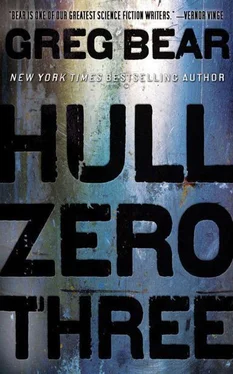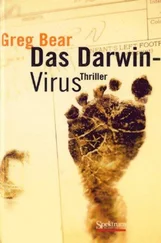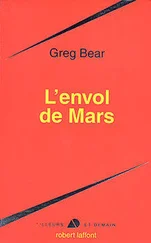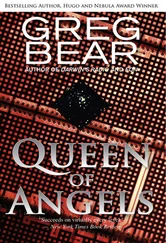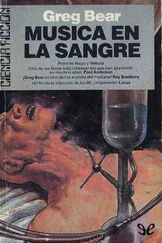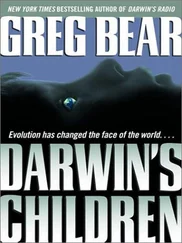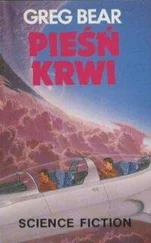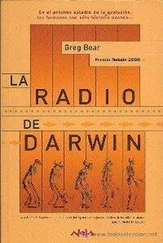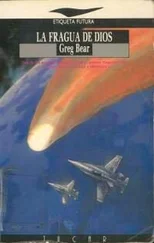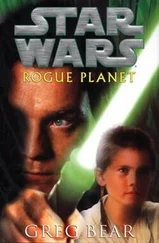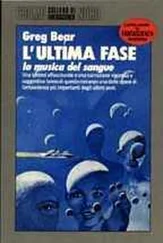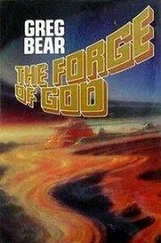“And me?”
“Not so much. Not yet. Nell doesn’t know where you fit in.”
“But she took your twin into Ship, as well as you. Wouldn’t you be the same?”
“I don’t know.”
“What does Ship need from him? What do you think he’s carrying?”
“I don’t know.” I feel uncomfortable coming to any conclusion about my twin. I’m still not in the clear myself. The way Kim looks at me. The way Nell seemed to be testing all of us.
The girl has doubled back and waits at a junction with another tunnel. I don’t feel comfortable talking about any of this in front of her.
I’ve lost any real sense of position. The corridor we’ve been following moves on for another ten meters, then comes to a rounded stop.
“Outboard,” the girl says, and pushes off from the floor, straight up the shaft.
We follow. Less than thirty meters beyond, we plunge into a warm, moist, shadowy volume of indefinite size. Kim grabs a loose cable, then wraps his ham fist around my ankle. As if responding to our presence, the volume suddenly illuminates. We have to shield our eyes against the brightness.
“You should have closed your eyes,” the girl says, a vague small blur close by.
“Thanks for the warning,” Kim says.
I peep out through my fingers. Details swim into view. We dangle for a moment on the outstretched cable, then Kim hands me down, and we brace on the lip of the shaft. I stay close, getting my bearings, and feel safer next to him.
We’re perched on the edge of a big sphere, much bigger than the forest balls or the trash voids of Hull Zero One, large enough that it seems possible it might reach all the way out through the skin of the hull. It might even bump out on Ship’s surface, with, I hope, its own observation blister. I’d like to see what’s happening outside, down on the moon.
The big bright space is not empty. Far from it. Beginning just four or five meters from the wall, hundreds of milky globes hang in suspension, surrounded by puffs of shining, translucent branches. The tips of the branches fuzz out in smaller tubes until the globes seem surrounded by feathery down, like huge dandelion seeds. There must be millions of them. It’s their refraction of a distant light source that almost blinded us. We can reach out to the nearest, but Kim warns, “Don’t touch.”
It looks beautiful—and wicked sharp.
“What’s this?” I ask the girl.
“Mother’s library,” the girl says.
Above, the branches rustle in a rapid, disconcerting dance. Little rods move along the outer tips on wirelike legs, rotating, pushing aside branches, then jabbing their tips into each puffy “seed.” The rods withdraw, move along to the next globe, maneuver through the branches, and reinsert, churning the contents of the globes.
“I know what this is,” Kim says. “It’s like the root of the Klados—the library the Catalogs draw from. The gene pool. But it’s too big. Something’s different. I know this,” he repeats in wonder.
“Sounds like you’ve found your résumé,” I say.
“Yeah, I’m a cook. Assistant chef. This is like a diagram of my kitchen.”
The girl smiles. “Mother will be happy,” she says.
“The question is, why is it so big ?” Kim asks. “The places I’m supposed to work in are much smaller. I mean, genes are small , so why all this?”
I think I know, but now is not the time—nor do I like the answer. It’s tough to discover a conflict in one’s essential being, but I have a big one—a great big conflict that could rip me apart or turn me into something as bad as what we’d likely find in the hidden pages of the Catalog….
Or in the pages of my twin’s book. Everything hinges on what I do when we meet Mother.
I push that small voice back into the mental gloom from which it emerged and we follow the girl along a beam and series of cables, to where this huge sphere joins with another, smaller sphere—less than forty meters wide and empty, dark.
A single tube about half a meter in diameter thrusts from the center of the puffball chamber and through the darkness. The tube’s surface is visibly frosting. It’s like a delivery chute. A dumbwaiter leading from the big, big kitchen to the dining room.
“We cross fast,” the girl explains. “No cables, no touch. Just kick off and fly.”
Kim doesn’t like this. “I’ve never been that graceful,” he grumbles.
“It is cold,” the girl emphasizes. “Do not take a breath out there, until after you cross.”
“Great,” Kim says.
The girl launches from the rim where the two spheres meet. We suck in air, then hold it. Kim goes next. He’s more graceful than he gives himself credit for. He vanishes into the darkness, toward a dim beam of light from the far side. My eyes hurt, staring into the cold. His shadow crosses the light, and a moment later, I hear him draw a whooping breath.
“Okay!” he shouts.
My turn.
It’s colder at midpoint than anything we experienced back in Hull Zero One—cold enough to freeze me solid in minutes if not seconds, and the air seems gelid, denser. Tingling snaps crawl along my skin as well, and I see blue lights that aren’t there.
Then, Kim’s long arm grabs me again and pulls me back on target.
“Good,” the girl says.
Skin tingling, eyes defrosting, all those little blue lights flitting away—I wonder if I’ve awakened from this long, bad dream and fallen into another, better one. Not the first time, of course. Hope springs eternal. The air is filled with sweet scents, funky scents—flower smells and human smells coming and going in warm waves, more intense than anything I’ve experienced.
What I’m seeing, or think I’m seeing, is improbably wonderful. It’s a weightless town—more of a village, actually, made of hundreds of little round domiciles both clear and opaque, colored and white, arranged like clusters of soap bubbles in another curved space. Children work and wander and play throughout, naked or wearing blue overalls, clutching little jars and long sticks, pushing food and bottles and other objects through the warm, weightless air like hundreds of busy little angels. Children everywhere, all female.
Beautiful, identical, happy.
“Welcome,” our girl says, and something goes out of her—a stiff, stubborn posture. Compared to the others, she’s grubby, travel-worn, tired. It makes her look older. “I’m going to go be with Mother now. After I touch her, she will remember all that’s happened. Then she will meet with you.”
Kim and I clutch a cable on the forward wall of the chamber. The currents of chill air behind us are blocked. Only the tube from the gene pool passes through to arrive at a glorious conclusion—a flower of golden rods, each rod in turn blossoming again.
The girls move around this flower like little bees, taking and carrying away samples.
What I’ve seen is humbling and beautiful. We are on the outskirts of Ship’s glorious belly button. Well, of course, neither Kim nor I has a navel. But the girls do, cute little innies—and Ship does as well, a truly whopping Omphalos.
This is the beating, vibrant gonad of Hull Zero Three, the very reason for Ship’s existence and journey. This is where the Klados begins—where all living things are designed and judged. Mother has occupied the gene pool, making herself mistress of life itself.
But I still don’t remember Mama.
With all this stimulating visual information inspiring us to pull up submerged memory and knowledge, why don’t we remember Mother ?
Who designed and made her ?
“Heads up,” Kim says. I look where his thick, lemon-colored finger points. “Reception committee.”
Читать дальше
